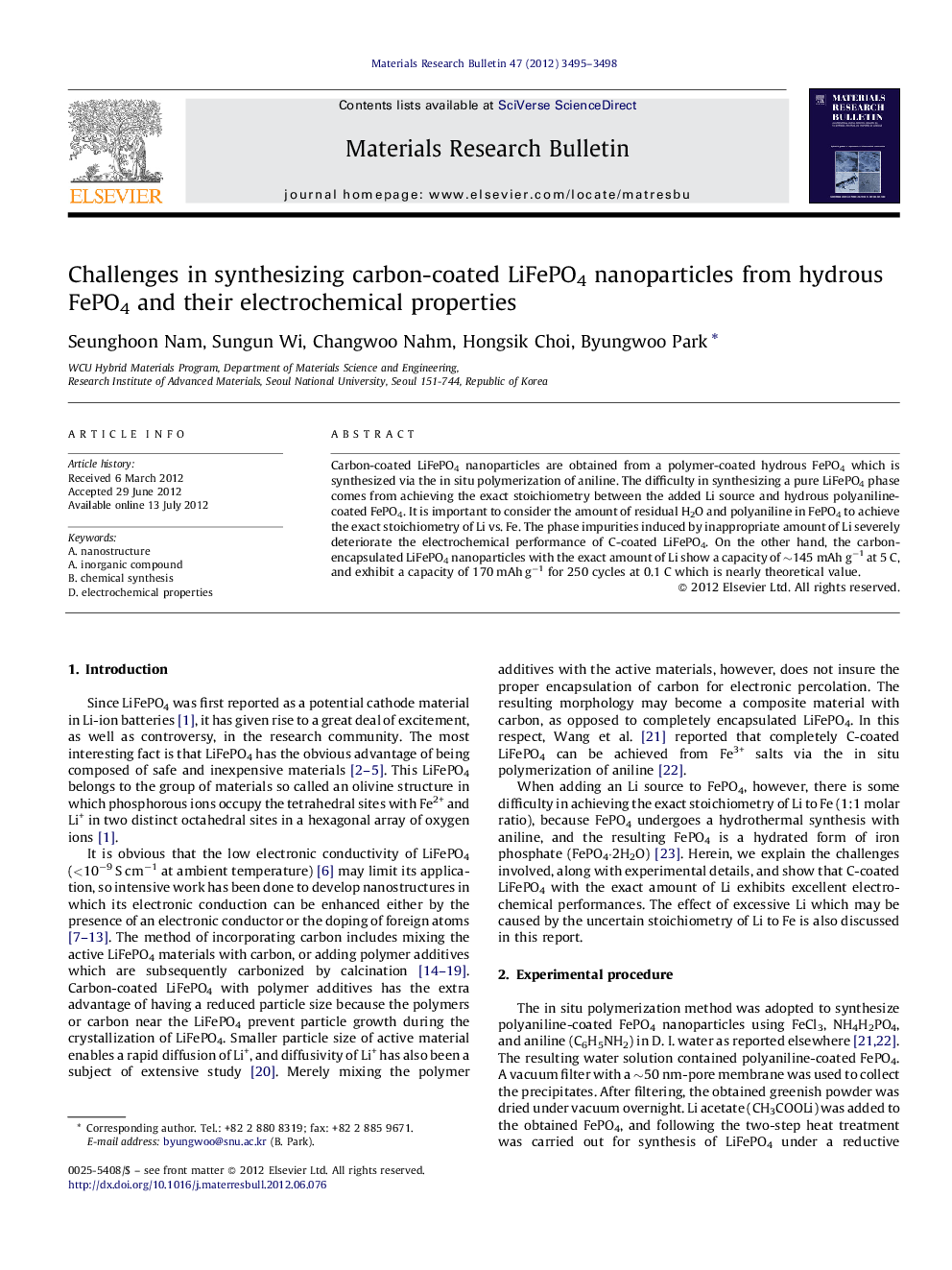| Article ID | Journal | Published Year | Pages | File Type |
|---|---|---|---|---|
| 1490133 | Materials Research Bulletin | 2012 | 4 Pages |
Carbon-coated LiFePO4 nanoparticles are obtained from a polymer-coated hydrous FePO4 which is synthesized via the in situ polymerization of aniline. The difficulty in synthesizing a pure LiFePO4 phase comes from achieving the exact stoichiometry between the added Li source and hydrous polyaniline-coated FePO4. It is important to consider the amount of residual H2O and polyaniline in FePO4 to achieve the exact stoichiometry of Li vs. Fe. The phase impurities induced by inappropriate amount of Li severely deteriorate the electrochemical performance of C-coated LiFePO4. On the other hand, the carbon-encapsulated LiFePO4 nanoparticles with the exact amount of Li show a capacity of ∼145 mAh g−1 at 5 C, and exhibit a capacity of 170 mAh g−1 for 250 cycles at 0.1 C which is nearly theoretical value.
Graphical abstractFigure optionsDownload full-size imageDownload as PowerPoint slideHighlights► Residual H2O and polyaniline are accounted for exact stoichiometry of Li vs. Fe. ► Carbon-encapsulated LiFePO4 exhibits 170 mAh g−1 for 250 cycles at 0.1 C. ► The pure C-coated LiFePO4 nanoparticles show a capacity of 145 mAh g−1 at 5 C.
